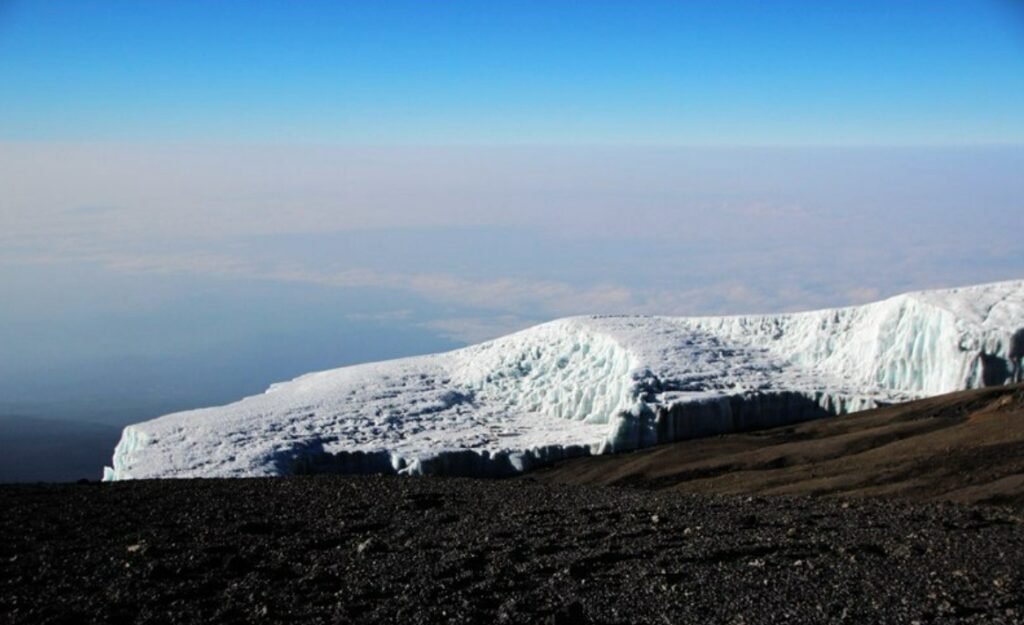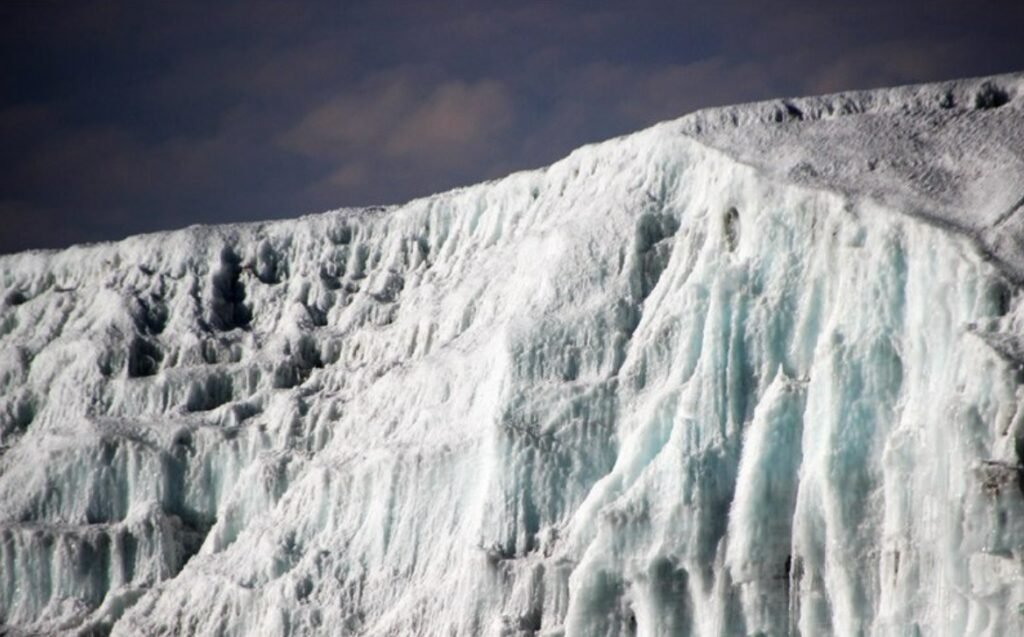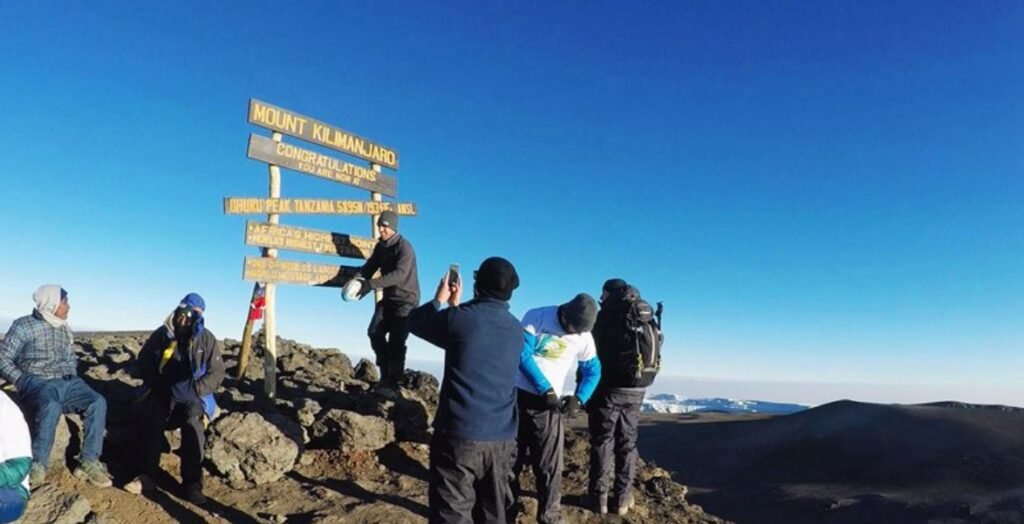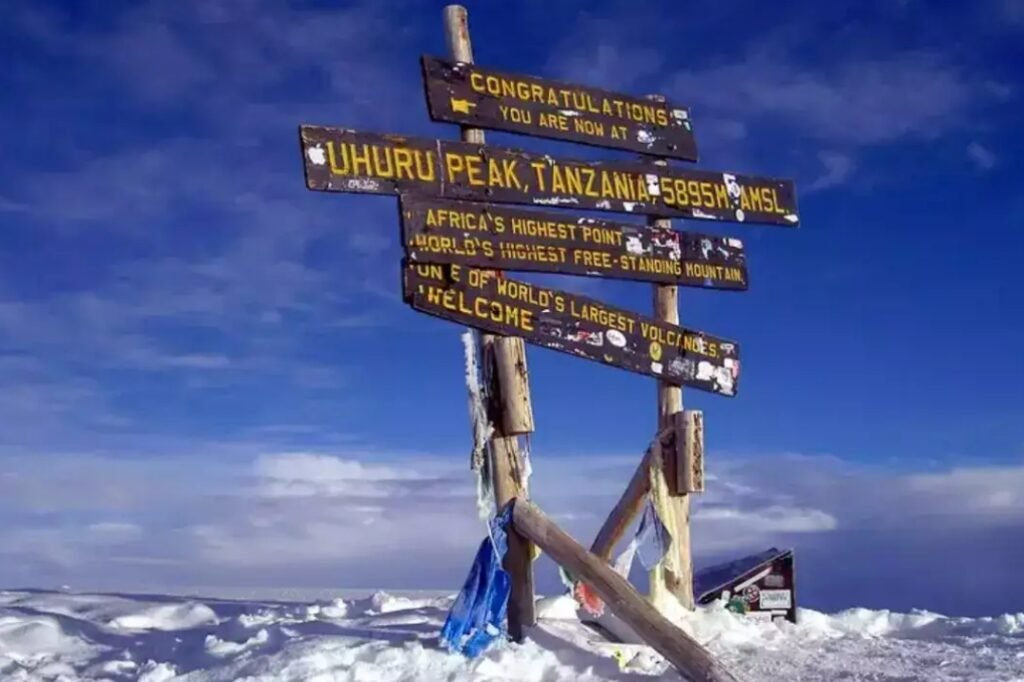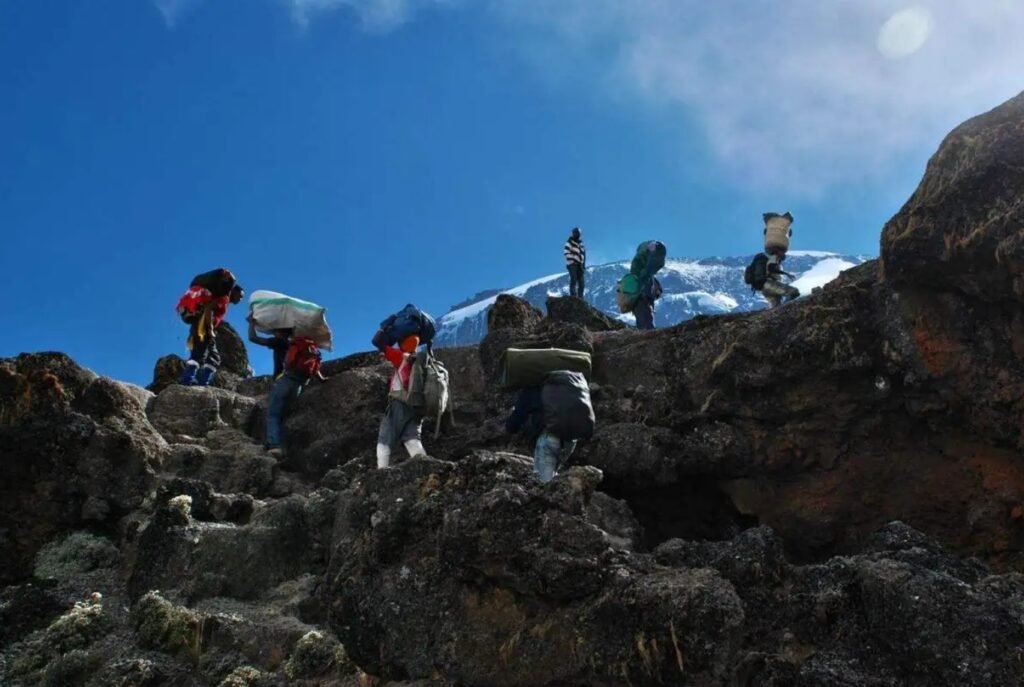Introduction to Mount Kilimanjaro:
Mount Kilimanjaro is the highest mountain in Africa, located in northeastern Tanzania near the Kenyan border. It sits at a geographical coordinate of 3°S latitude and 37°21’E longitude, just over 300 kilometers from the equator, with an elevation of 5,963 meters and covering an area of 756 square kilometers. It is often referred to as the “Roof of Africa.”
From the vast East African savanna, Kilimanjaro appears as a solitary dancer, adorned with a white hat of snow at its summit, wrapped in mist around its waist, and dressed in a long green skirt dotted with colorful tents.
Situated near the equator, Kilimanjaro showcases dramatic climate and landscape variations. The journey from its base to the summit traverses several vegetation zones: tropical rainforest, semi-arid shrublands on the surrounding plateau, fertile farmlands on the southern slope, dense cloud forests, open marshlands, high-altitude deserts, and the symbiotic zone of mosses and lichens, all the way to its glacial peak.
Kilimanjaro is also known as the “Equatorial Snow Peak” due to the stark contrast between the high temperatures at its base, which can reach 55°C, and the icy temperatures at its summit, which often fall below -30°C. It holds a sacred place in the hearts of Tanzanians.
In recent years, the melting of the summit glaciers has become a significant concern, with over 80% of the ice having shrunk in the past 80 years. Experts predict that Kilimanjaro’s iconic snowcap may completely vanish within the next decade, potentially bidding farewell to this unique phenomenon of an “equatorial snow mountain.”
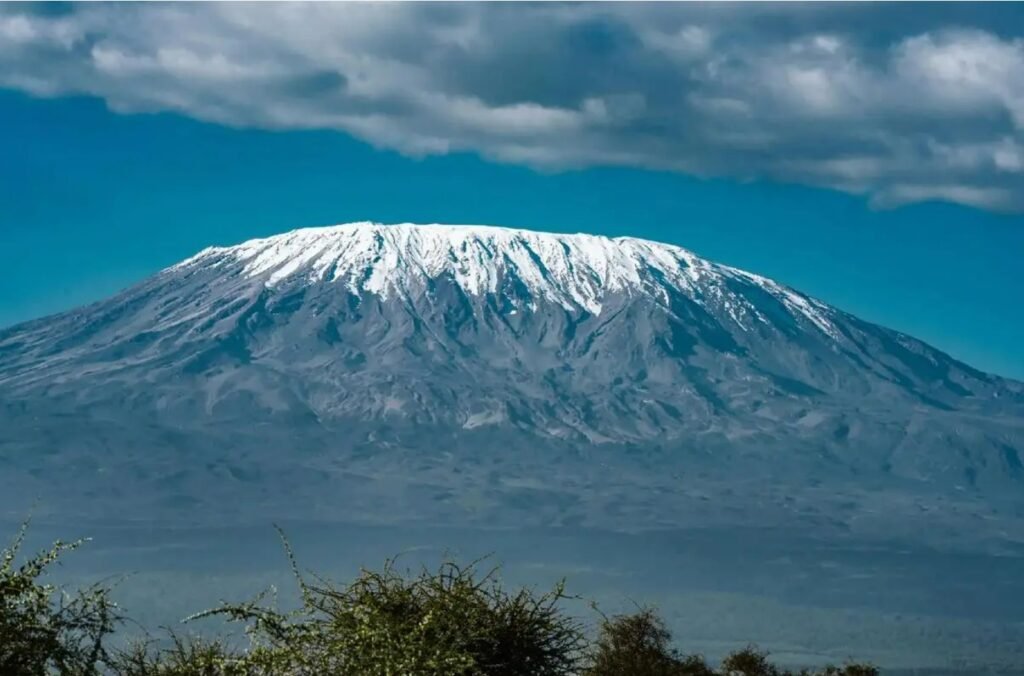
Climbing Mount Kilimanjaro: Three Convenient Routes
Climbing Mount Kilimanjaro requires registration with a trekking company, as solo ascents are not permitted. Each group must have at least one guide and one porter. There are three main routes to reach the summit: Marangu, Machame, and Umbwe.
Among these, the Marangu route is the most popular, and our journey will take this path, typically lasting 5 days and 4 nights. The starting price for this route is around $800 per person, which includes park entrance fees. Tips for the guides usually range from $50 to $100, while porters receive about $50.
These three routes are considered relatively easy and generally don’t require specialized climbing gear. Each year, about 15,000 people attempt to climb Kilimanjaro, with roughly 40% successfully reaching the summit. It’s worth mentioning that Kilimanjaro is one of the highest points on Earth that can be accessed by foot.
Other routes, especially those ascending from the glacier side, are much more challenging and require experienced climbers.
Essential Gear for Climbing Mount Kilimanjaro:
- Hiking Boots and Thick Socks
- Trekking Poles
- Sunglasses
- Hat
- Down Jacket
- Down Gloves
- Down Sleeping Bag (Temperatures at the summit can drop to -30°C)
- Outdoor Rain Jacket (for traversing the tropical rainforest)
- Insulated Water Bottle
- Flashlight and Batteries
The physical exertion required to reach the summit is significant, so the climbing team will also provide snacks like chocolate and glucose.
To protect against the sun and cold, it’s advisable to bring sunscreen and moisturizing lotion.
Additionally, don’t forget a star guide to help you appreciate the stunning night sky!
Climbing Stages:
Day 1: Ascend from 1,700m to 2,700m
This leg of the journey takes you through tropical rainforest, so it’s essential to prepare for humidity. Once you step into the forest, it slowly closes behind you. The trees are tall and pristine, creating a dense canopy that blocks out the sun. After a recent rain, everything is lush and vibrantly green. The wind sweeps through the mountains, and you can feel life springing up all around you.
Halfway through the trek, we reach a lunch spot where our chef has already set up a long metal table with benches, ready with cutlery and lunch. The spread is surprisingly lavish, featuring coffee, milk, juice, and chocolate to drink, along with bread, chicken legs, hot soup, fruit, and desserts. There’s no steam rising from the food, just the metallic scent of the plates. Each bite feels like a gentle nudge to the stomach, reminding us of the long trek ahead.
The night at the 2,700m base camp is stunning, with stars seemingly falling like rain. One of my companions has a star guide, and a thin green laser cuts through the sky. It feels like we’ve stepped into a scene from Star Wars, as if we’re not on Earth but among the galaxies, with clusters of stars zipping by. I don’t know my constellations, so I poke around with the star guide, aimlessly pointing at stars, playfully engaging with the universe, completely unbothered. In this magical moment, I share a connection with the cosmos, face to face with the night sky.
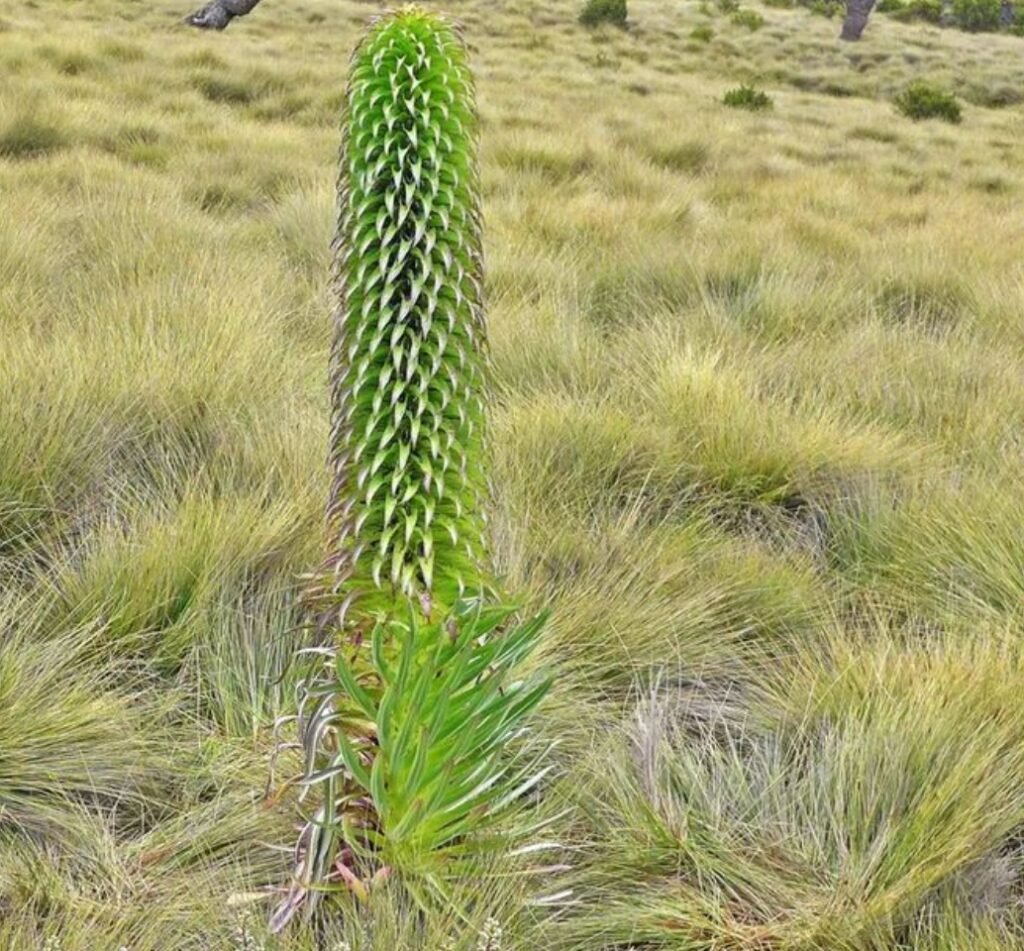

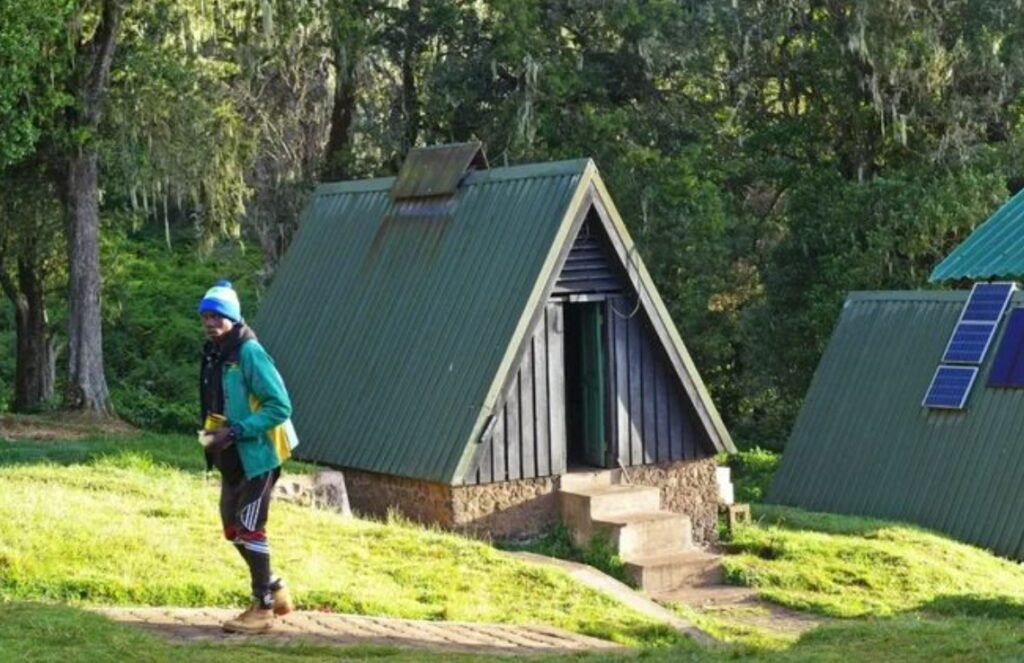
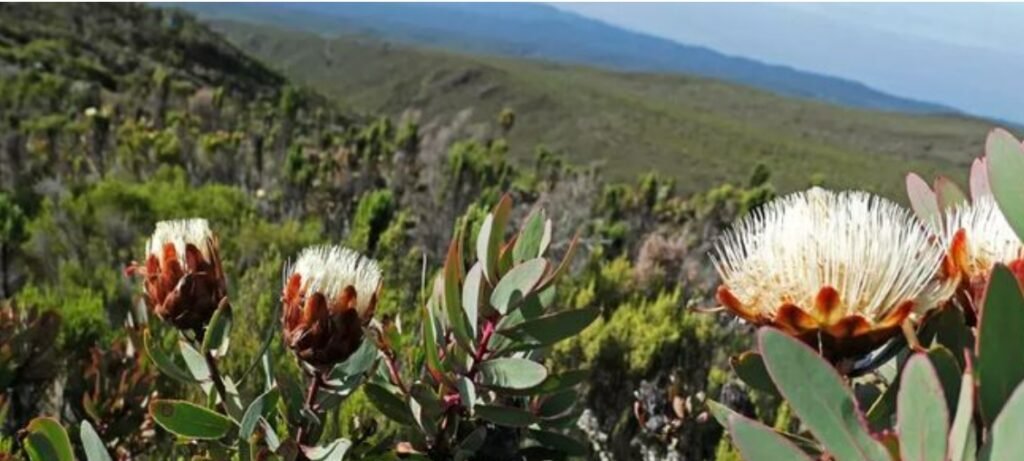

Day 2: From 2,700 to 3,720 meters above sea level
There were two groups of Japanese climbers ascending the mountain alongside us. Both groups were made up of elderly folks, around ten people per group, with an average age of at least 60. Interestingly, there were more elderly women than men, and they were all neatly dressed, with their faces powdered pale white and pink.
Their group was incredibly organized. In contrast, our group would naturally split into two—the young and strong in one part, and the elderly or less physically fit trailing far behind. But the Japanese elderly group stayed tightly packed, moving as a small, cohesive unit along the ridge. They took very short breaks, and even when they were resting and drinking water, they kept their legs moving.
In Japan, it seems like life after sixty can still mean starting a whole new chapter.
When we reached the camp at 3,950 meters, some of the group began playing poker. Everyone had a thick stack of Tanzanian shillings in front of them, each note worth 10,000, which is about 14 dollars. Each hand was played quickly, with bets ranging from 10,000 to 80,000 shillings. Though the stakes weren’t huge, the games moved fast, and before long, those thick stacks of money were gone.
With nothing left to do by 7 PM, we all started getting ready for bed. The small triangular cabin fit four people. When I got back to my cabin, my roommates hadn’t returned yet, so I happily slipped into my sleeping bag. On the first night, the bag was still clean and cool, and I felt a little hesitant crawling in. After a few days, though, it had taken on a familiar smell, like cooked meat—but it was my own scent, so it felt oddly comforting and put me right to sleep.


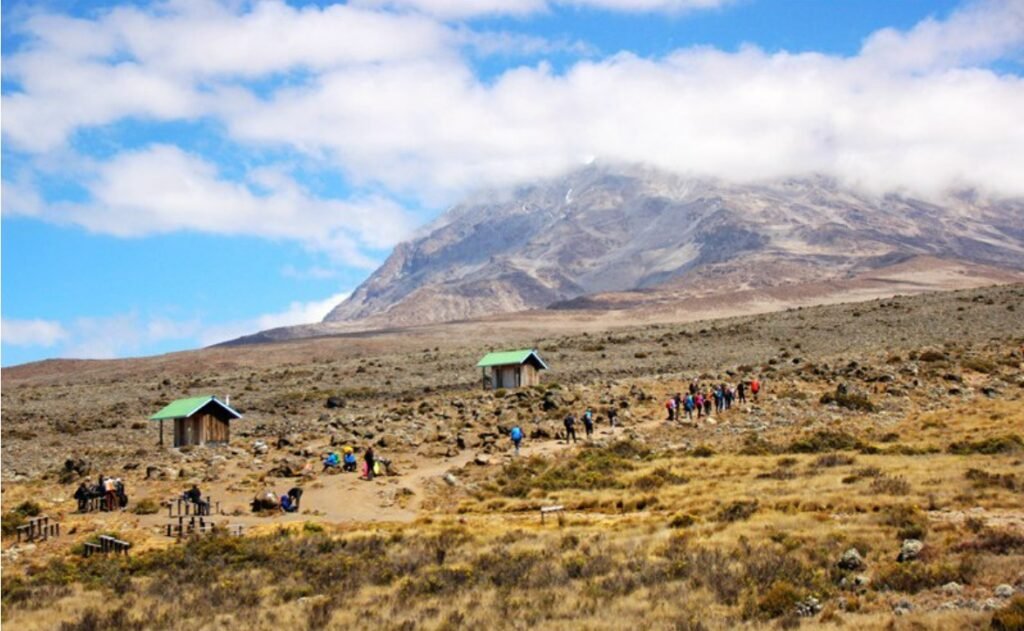
Day 3: From 3,720 to 4,800 meters above sea level
A fierce wind started blowing on the way up, and the temperature dropped sharply. Small chunks of ice, like tiny stones, began pelting down on us—not quite hail, but more like snow pellets. The wind scattered the group, stretching us further and further apart. Before I knew it, I had fallen behind, alone in a desolate landscape. The sky was a murky yellow, with a storm so intense it made the vastness of the surroundings feel utterly hopeless. The only path forward was a barren trail, lined with reddish-brown rocks and the occasional cactus.
Our guide, Eric, caught up to me from behind and walked with me. We talked as we trekked, trying to pass the time through what was an agonizingly dull and miserable stretch of the journey.
He told me his girlfriend is Canadian, and she had come from the far north of Canada to Moshi Town to volunteer. They met at a nightclub and fell in love. She had come from the other side of the world, freeing him from the relentless, searing heat of the sun—its intensity tainted with the smell of sweat and rust. In return, he freed her from the cold, dark nights of half her life spent in a frozen wasteland. This wasn’t love; it was mutual aid, a form of self-rescue.

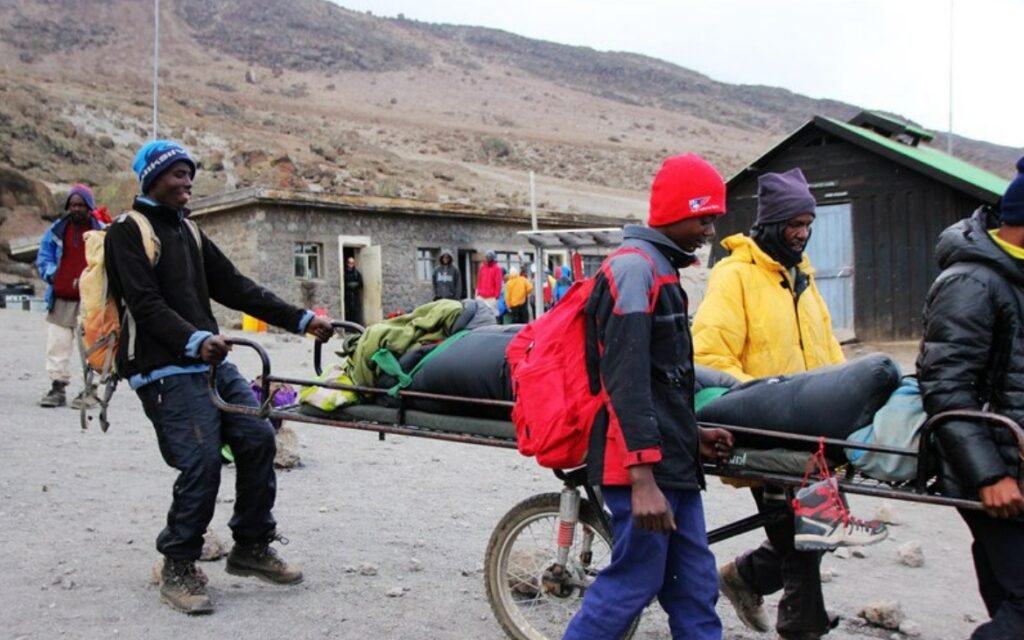
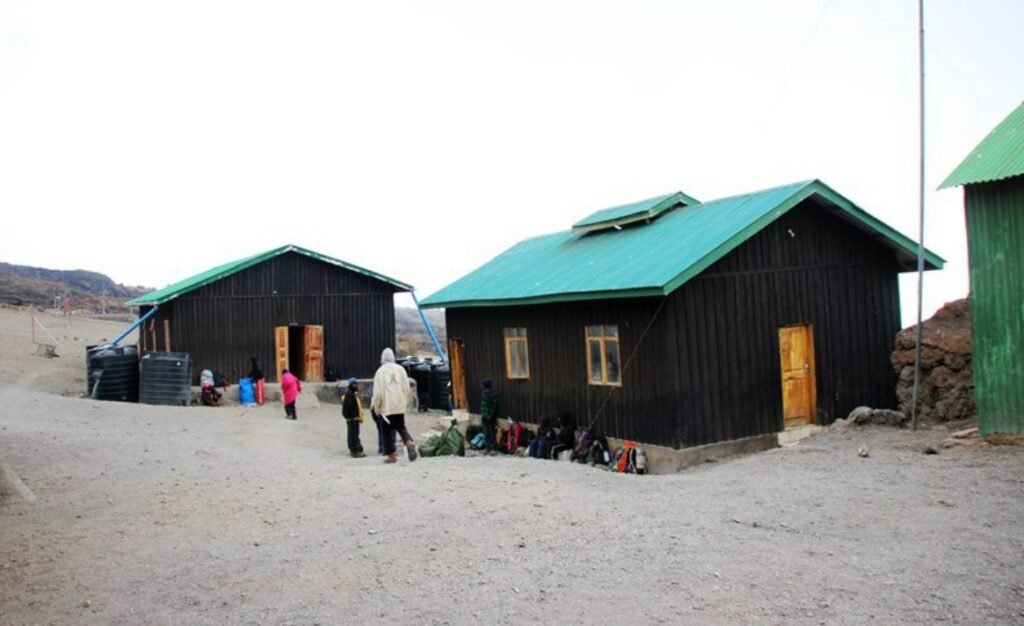
Summit Phase:
On the third day, we set off for the summit at 11:30 PM. As we stepped outside, we realized it had started snowing. Climbing in the snow is actually quite comfortable—not cold and no wind. We all felt lucky.
Three hours later, halfway up, the climb started to get tough. While resting in a snow cave, we began to feel the weight of it. The snow was falling heavily, and within minutes, a thick layer had piled up on our hats and clothes. My energy was completely drained. My mouth tasted like rusty brass, my head pounded, and I couldn’t shake the chill. The guide poured a bit of cream or glucose into everyone’s hands. I licked mine clean, desperate for energy, and felt a bit better.
At that point, someone in the group called for two of our female teammates, who were clearly exhausted, suggesting they head back down. The team leader shouted: “I’m the captain, and everyone listens to me! We’re all going to the top!” The group fell silent. The fresh snow reflected the darkness of the snow cave, and the headlamps on our helmets were flickering weakly, almost out of battery. The faint glow mirrored our fading spirits.
The snow continued falling steadily, calm but overwhelming, and the mountain grew steeper by the minute. The sky remained indifferent. Whether we climbed or not, Mount Kilimanjaro stood there, waiting to conquer us.
After a short rest, we pressed on. The next stretch was even harder, and we could barely manage more than three steps before stopping to catch our breath. I kept asking the leader, “How much longer?” He replied, “One hour.” An hour later, I asked again, and he gave the same answer: “One hour.” I asked once more, “How much longer?” He still said, “One hour.” Eventually, when I asked again, he simply stopped replying.
The Final Ascent:
The last part of the climb was the steepest, full of large rocks and loose gravel. My guide pulled me forward, step by step. With the snow covering everything, it was hard to tell how deep each step was. Even though the guide was experienced, he nearly slipped with every step, constantly muttering, “Somy, sorry.” The two of us swayed like we were drunk, stumbling and staggering, moving forward half on our knees with each step.
Finally, after being half-dragged, half-pulled, we made it to the summit. I was slower than the others, and by the time I reached the platform, everyone was already celebrating. There had been talk earlier that the guys would do a naked run once we reached the top, but given the miserable wind and rain, no one even brought it up. The cramped summit barely had space for twenty people, so we just stood there, turning in circles.
At 6 AM, the entire group reached the false summit at 5,681 meters. Afterward, our guide went alone to the true summit at 5,963 meters. The rest of us practically rolled and crawled our way back down to the 4,800-meter camp. After a brief rest, we hurried back down to the 3,950-meter camp for the night.
